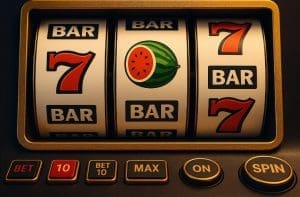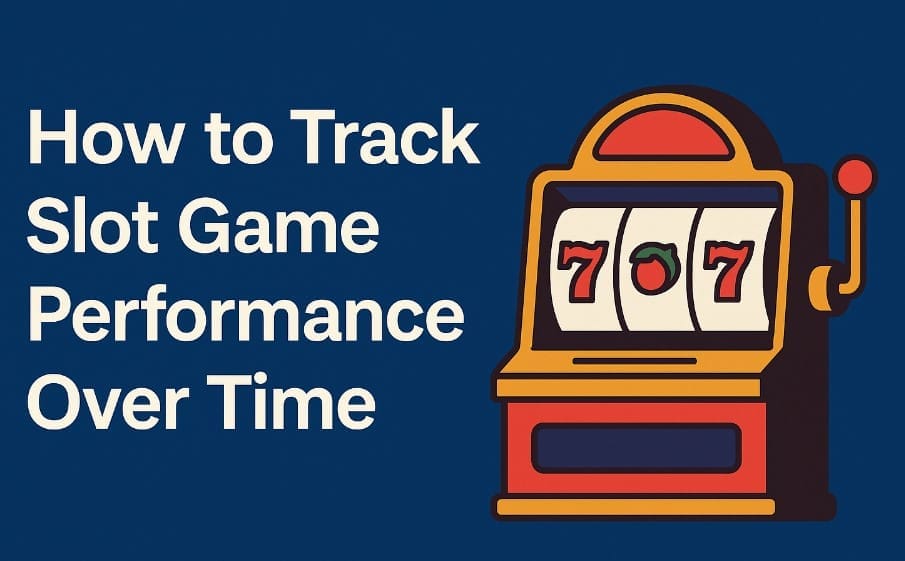Slot games look simple on the surface—pull the lever, spin the reels, chase the bonus—but behind the blinking lights and cheerful sound effects lies an ocean of data. Whether you’re running a casino floor, managing an online platform, or just a curious player who likes keeping tabs on how games treat you over time, performance tracking can tell you things that gut feeling never will. And, honestly, sometimes the numbers surprise you more than the reels themselves.
Why keeping an eye on performance matters
A new slot release can feel like a party at first. Everyone shows up, the graphics are shiny, the bonus round feels fresh, and for a few weeks, the cash register sings. Then the novelty fades. If you don’t track what’s happening—who’s still playing, how often they come back, how much they’re betting—you’ll miss the early signs of decline. I’ve seen casinos keep machines on the floor way past their prime, stubbornly hoping players will warm back up to them. Spoiler: they usually don’t.
Tracking isn’t about spreadsheets for the sake of spreadsheets. It’s about spotting when a game is sliding before it hits the floor, or recognizing when a small tweak can stretch its lifespan.
The numbers that actually mean something
Here’s the thing: there’s no single golden metric. People argue about “RTP is king” or “retention tells all,” but in reality, you need a cocktail of data to get a clear picture. A few standouts:
- RTP (Return to Player) and volatility, which together shape how the game feels to play.
- Hit frequency and payout percentage, basically how often someone gets a thrill of winning.
- Session length and repeat visits, which whisper whether people are enjoying themselves or just peeking in and bailing.
- ROI and revenue growth, the cold, hard bottom line.
I remember a casino manager once telling me he had two machines side by side. One had flashy graphics and paid out big jackpots occasionally. The other looked like something from the late 90s but handed out small wins steadily. Guess which one kept a crowd around it every Friday night? Yep—the “old” one. Data would’ve shown the same story long before he noticed with his eyes.
Reading between the lines of engagement
Engagement is slippery. If you only count logins or session starts, you’ll miss the real picture. I once worked with a platform where players launched a game daily, which on paper looked fantastic. But dig deeper: most quit within 60 seconds. Why? The load times were brutal. Nobody wants to wait twenty seconds for reels to appear, not when another slot is two clicks away.
Retention tells its own tale. When players disappear after a week, it’s rarely about bad luck—it’s usually because the game felt flat after the honeymoon period. Big franchises like Slotomania avoid this with constant events, gifts, and social competition. They know that if people don’t feel engaged, the numbers tank quickly.
Following the money (without losing your shirt)
Revenue tracking is where the romance fades and the reality check kicks in. If a game cost a fortune to develop and market, you need to know when it’s paying itself back. Sometimes you’ll see big spikes right after launch, but the drop-off is sharp. Other times the curve looks boring at first but stays steady for years—that’s where the real money lives.
I’ve seen operators run A/B tests with free spins for one group and cashback for another. The free spins brought in more players initially, but the cashback group quietly spent more over the long haul. Without testing and tracking, that insight would’ve been invisible.
Players aren’t shy about feedback
Numbers can only tell half the story. Players will tell you the rest—often loudly. I once watched a forum thread where dozens of players moaned about a slot’s bonus round music being so grating they muted the game. Think about it: a tiny design detail was driving down engagement. After the audio was patched, session times bounced up. Customer satisfaction is sneaky like that—it often hides in the small stuff.
Innovation that sticks (and some that flops)
Every developer dreams of adding the next big mechanic, the “sticky wilds” or “megaways” of tomorrow. But new features don’t always land. I remember a provider adding a complicated symbol-combining mechanic that confused more players than it excited. The adoption metrics told the tale: barely anyone triggered the feature, and those who did often left quickly afterward. Innovation tracking matters. Sometimes you think you’ve given players a toy they’ll love, but in practice, it’s a Rubik’s Cube they don’t want to solve.
Operational wrinkles on the casino floor
Online operators don’t deal with the clunky side of hardware, but physical casinos do. Machines break, touchscreens freeze, ticket printers jam. Utilization rate—how many hours a day a machine is actually being played—plummets when downtime spikes. One casino I visited had a top-performing machine constantly out of order, losing thousands a week just because the repair loop was slow. You don’t need fancy analytics to feel that pain, but tracking error rates helps you spot patterns and fix them faster.
The tools that make sense of chaos
I won’t lie—raw data can feel overwhelming. Staring at CSV exports isn’t anyone’s idea of fun. That’s why specialized tools exist: Tangam Systems for floor optimization, Casino Analytics dashboards for revenue trends, even Unity analytics baked right into a game build. Developers sometimes use bug trackers like JIRA or Bugzilla to catch recurring gameplay glitches. The key isn’t just collecting numbers; it’s seeing trends at a glance. A good dashboard tells you “hey, something’s slipping” without drowning you in decimals.
Turning data into better gameplay

Once you’ve got the data, the temptation is to stare at it and overthink. The trick is to actually use it. If players consistently leave after twenty spins, maybe the first fifteen spins need more hooks. If revenue stalls while engagement stays high, maybe bet sizes are too conservative. Data points are signals, not orders—you still need human judgment to decide what to do.
I like the idea of “tinkering cycles”: run your game, check the numbers, test one small change, and see what happens. Do it often enough, and you stop panicking at downturns because you’ve built a rhythm of improvement.
When tracking goes wrong
A couple of common traps pop up all the time:
- Collecting everything and then freezing in analysis paralysis.
- Different departments tracking different KPIs with no shared view.
- Acting too late because the data wasn’t processed fast enough.
- Chasing short-term spikes instead of sustainable health.
- Forgetting that players are humans, not just numbers in a column.
I’ve seen teams waste months fine-tuning spreadsheets nobody actually read. It’s better to have ten clear, actionable metrics than a hundred that just sit in a folder.
Stories from the field
One Playtech slot looked like it was doing fine until someone noticed evening revenues nosedived. Digging into device logs revealed the free-spin bonus crashed on certain iPhones. Fixing that bug doubled nightly income. Another time, a Microgaming game had loyal players but terrible profitability. The operator shifted marketing to mid-stakes players who bet bigger, and suddenly the game became one of their top earners. Without tracking, both games might have been written off as “average performers.”
Keeping the long game in mind
The slots that survive years aren’t necessarily the flashiest. They’re the ones backed by steady monitoring and timely tweaks. Think of it like gardening: you water regularly, pull weeds before they spread, and plant new seeds when the soil feels tired. Tracking slot game performance is the same—it’s not about chasing every spike, but about nurturing sustainable play.
FAQs about tracking slot game performance
How often should performance be checked?
Most operators do monthly reviews, but in the fast-paced online space, weekly snapshots can catch early problems.
Is RTP the only metric that matters?
Not at all. RTP tells you the payout percentage, but engagement, retention, and ROI complete the story.
Do physical and online slot metrics differ?
Yes. Land-based casinos worry about machine uptime and floor space, while online platforms obsess over session depth and digital revenue growth.
Can tracking really boost player satisfaction?
Definitely. Catching irritations early—like confusing bonus rules or clunky load times—keeps players happier and more engaged.
Is there such a thing as tracking too much?
Yes. If your data pile paralyzes decision-making, you’ve overdone it. Always tie metrics to an actual decision you’re prepared to make.


